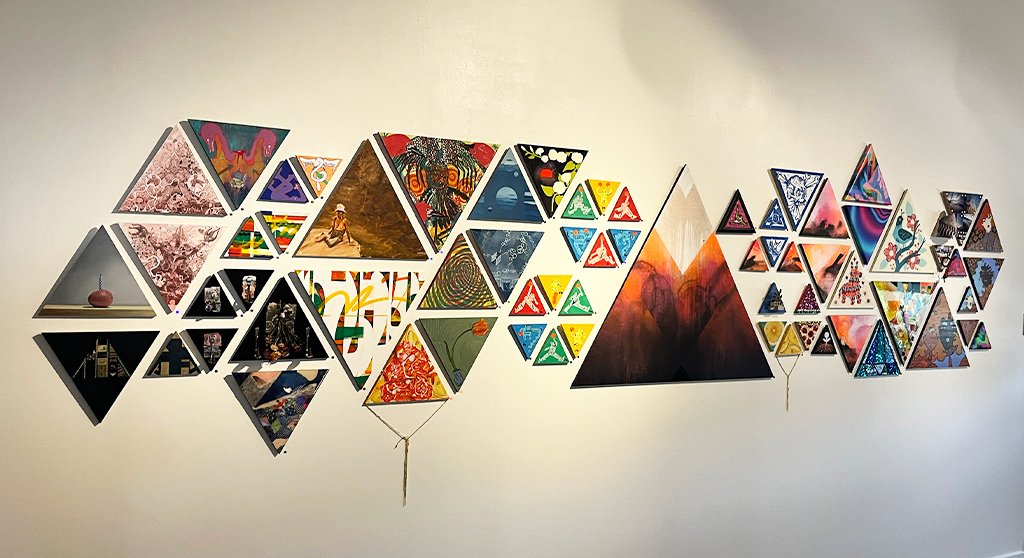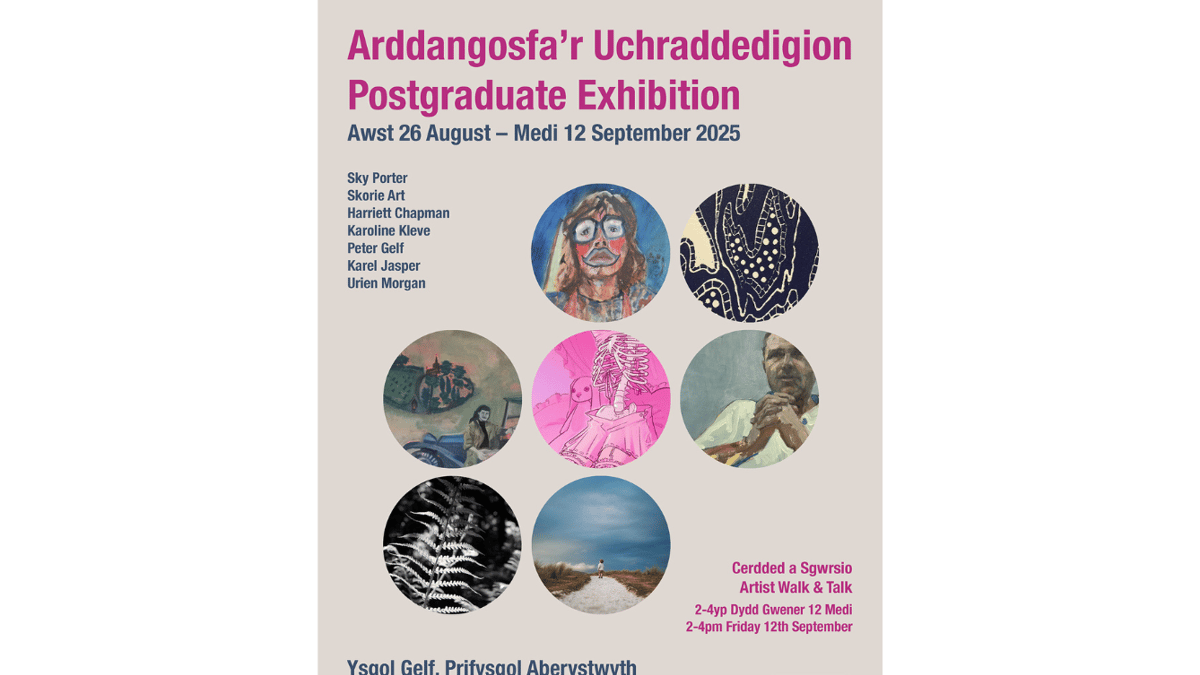Every year, the Parcours section of Art Basel takes art out of the convention centre and into the city. This year there is a new curator, Stefanie Hessler, the director of New York’s Swiss Institute. And instead of being scattered across Basel, the installations are arrayed along Clarastrasse, the street leading down from Messeplatz to the river. Venues range from empty storefronts to functioning restaurants, a clothing store and a car-park ramp. Hessler says the choice of venues ties into her interest in “how our behaviour as citizens and as consumers is completely changing the way we interact with a city or with the urban fabric of a place.”
We asked Hessler to introduce us to some of the works.
Mandy El-Sayegh
Clara Shopping, Greifengasse 26 (pictured at top of page)
Mandy El-Sayegh is putting on a performance in a 1980s shopping centre, covering the surfaces of an empty shop and restaurant with printed matter from around the world: newspapers, advertising, packaging and ceremonial imitation money that is burned in Chinese Buddhist culture to honour the dead. The performers repeat movements that are inspired by prayer practices to achieve trance-like states. It’s about the circulation of money and of information, but also the movement of bodies—in the performance—and across the globe through migration. [Performances at work will take place on Wednesday and Friday at 7.15pm]
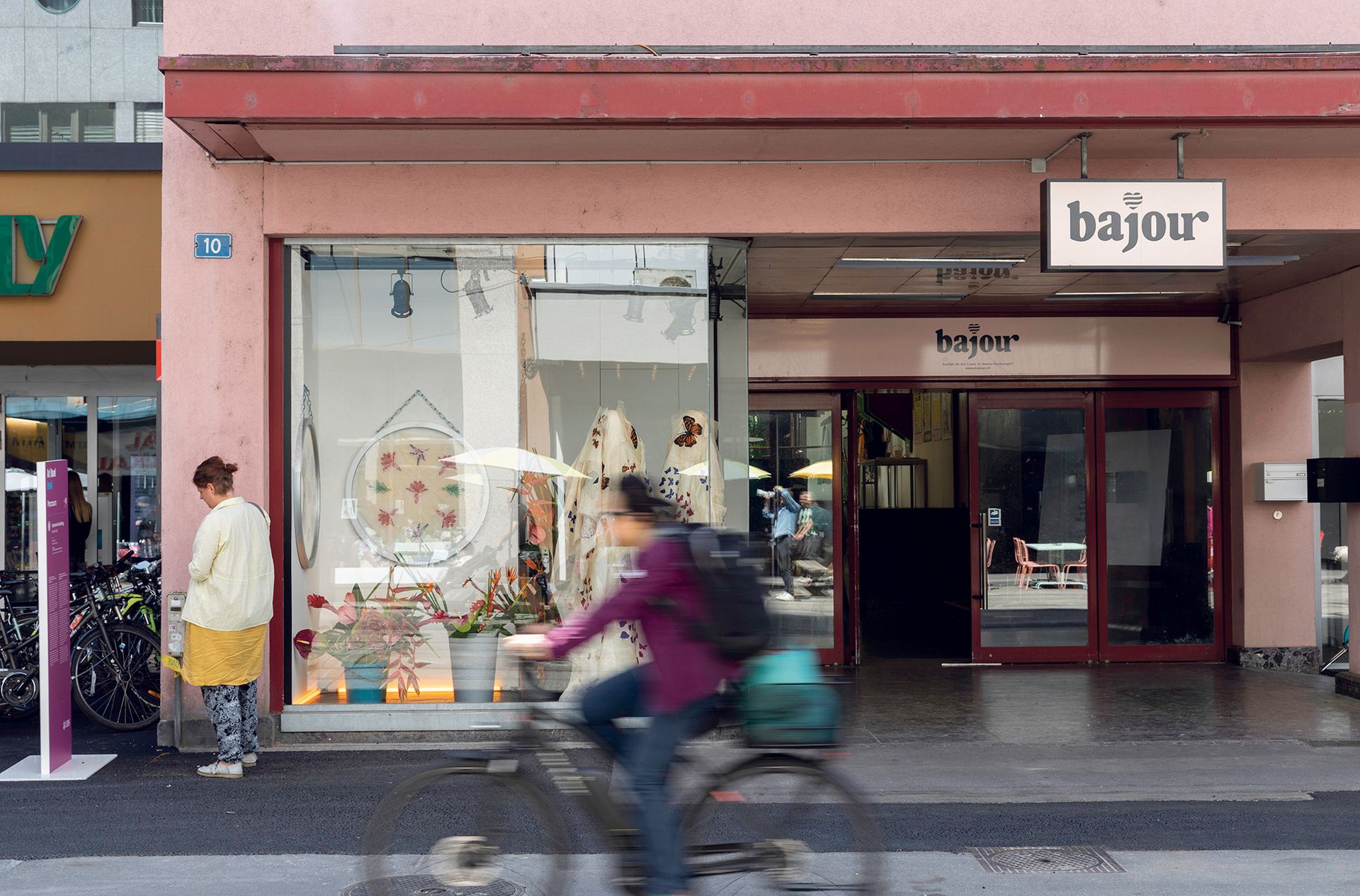
Stephanie Comilang, Bajour, Clarastrasse 10 David Owens
Stephanie Comilang
Bajour, Clarastrasse 10
This installation is called Search for Life, and it draws connections between Filipino seafarers and the routes of the cargo ships they work on, and the migratory patterns of butterflies. It is a textile installation in a window alongside flowers imported to Switzerland from Malaysia, the Philippines and other countries of the Global South that have become popular houseplants, but which were very often first brought to Europe by colonisers.

Nina Canell & Robin Watkins, Congress Center Basel, entrance via Clarahofweg David Owens
Nina Canell & Robin Watkins
Congress Center Basel, entrance via Clarahofweg
This is the third in Canell and Watkins’s Energy Budget series of videos. This project is being shown on the car ramp under the congress centre, which leads towards a bunker. The video itself is filmed inside a car manufacturer, and the artists are interested in how this environment is completely dust-free. The way they clean the factory is with female-ostrich feathers, apparently because of their electrostatic properties. So the video shows the body of a car as it glides through a feathery embrace.
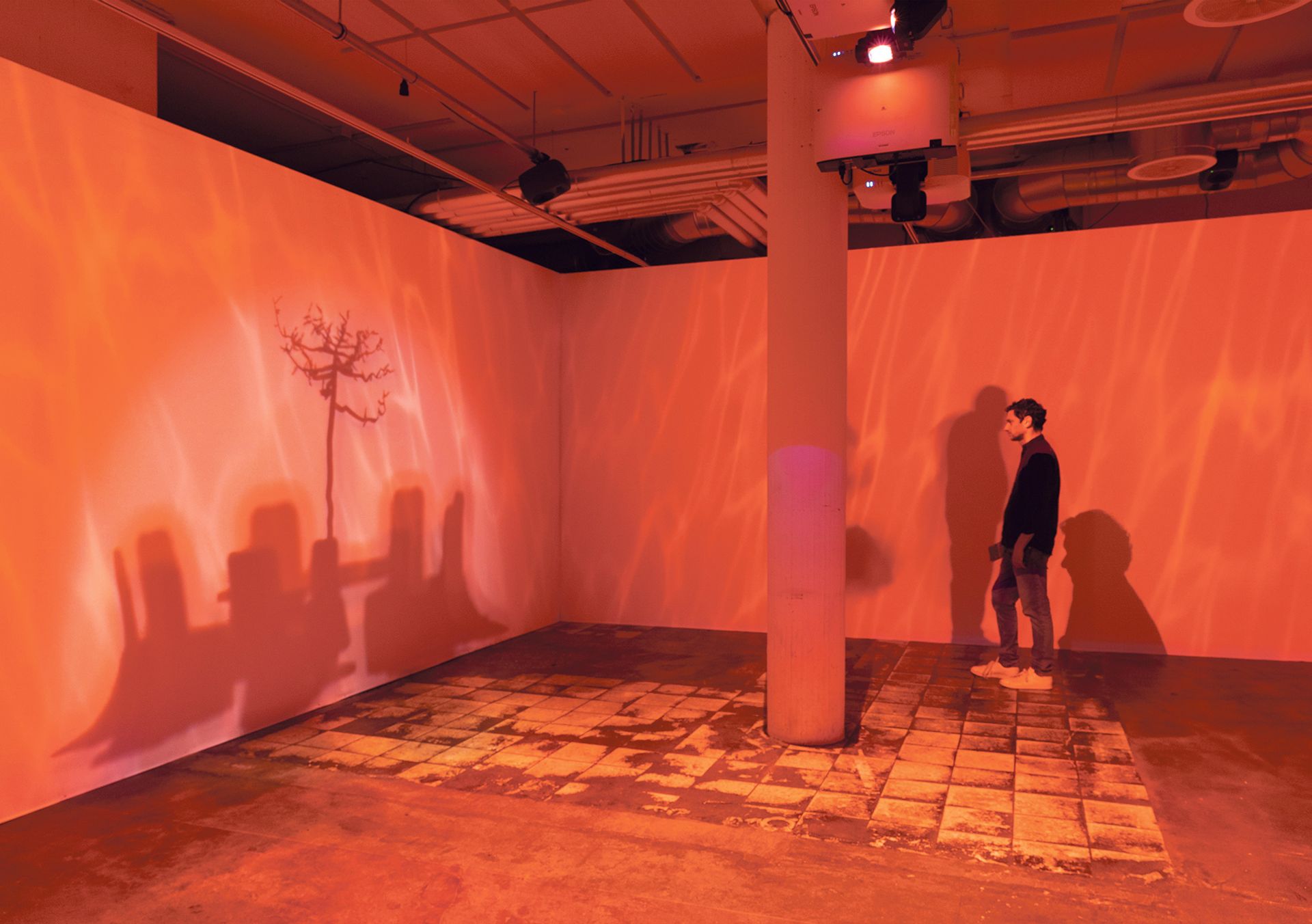
Lap-See Lam, Klara, Clarastrasse 13 David Owens
Lap-See Lam
Klara, Clarastrasse 13
Lap-See Lam is an artist who has been documenting the Chinese restaurant of her family, who moved from Hong Kong to Stockholm. She documented it through 3D scanning, and has made this 360-degree video animation, combining digital technologies and shadow play as different forms of storytelling. It made a lot of sense to have this project in a food court, where cuisine from around the world is served.
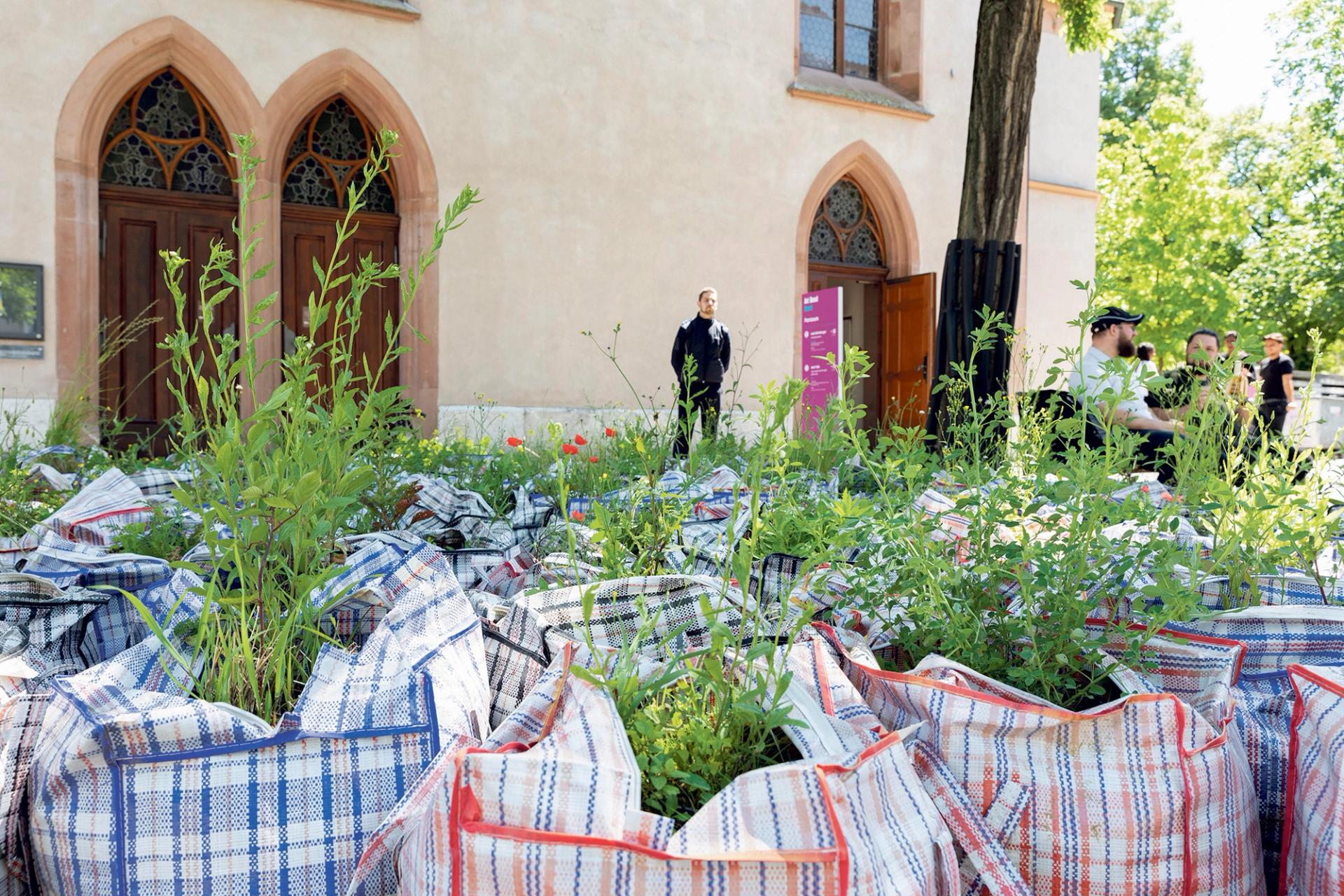
Lois Weinberger, Claraplatz 6 David Owens
Lois Weinberger
Claraplatz 6
Lois Weinberger’s installation is a portable garden brought to the city in these chequered bags, which were popular for international travel in the 1960s, because they are very cheap and big and easy for people to carry a lot of goods in. And so, Weinberger uses them to plant a garden inside with local soil. The idea is for the soil to accumulate seeds and for plants to start growing. Weinberger envisions the bags to eventually disappear and dissolve completely and for the garden to become one with the city.
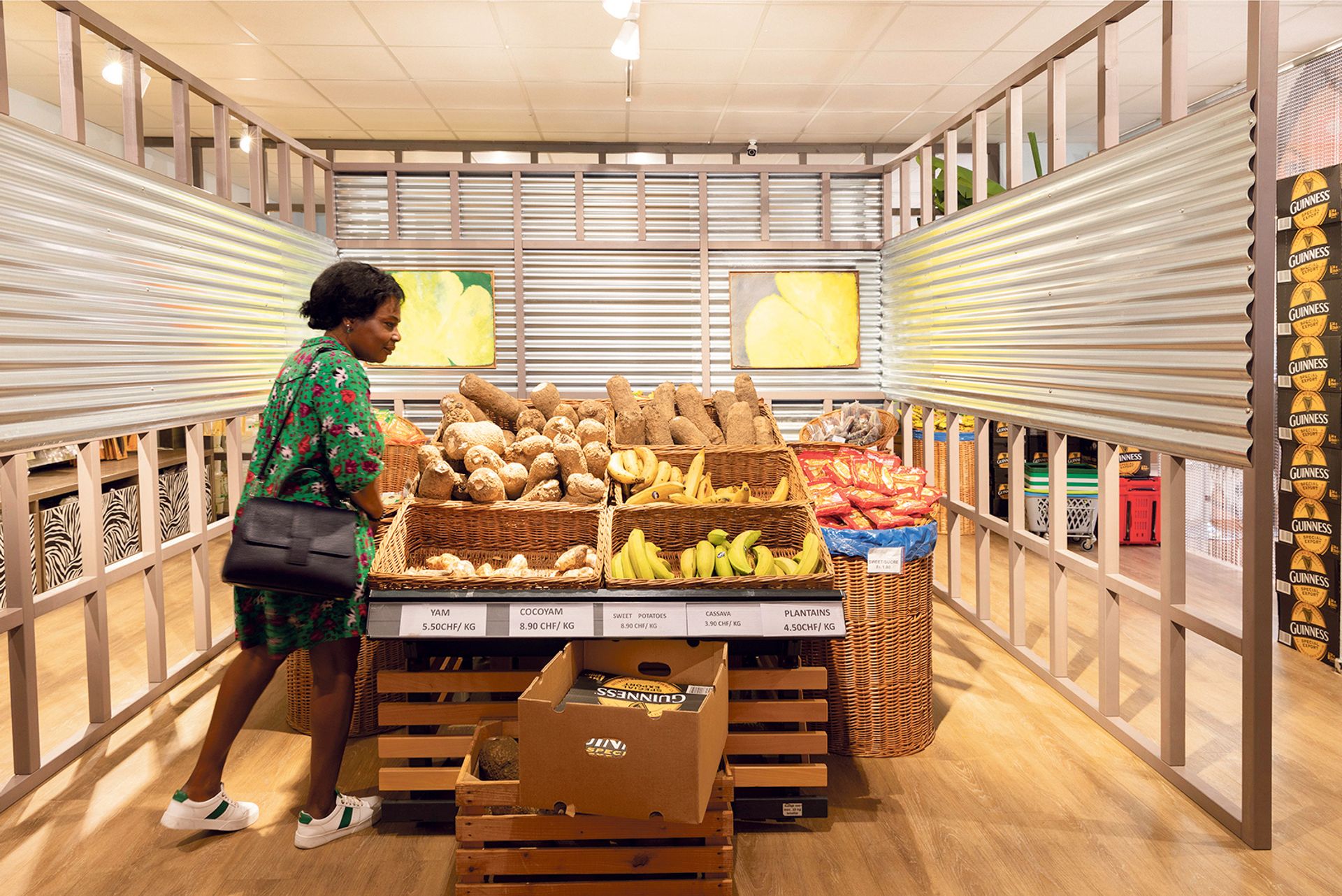
Alvaro Barrington, Tropical Zone, Clarastrasse 30 David Owens
Alvaro Barrington
Tropical Zone, Clarastrasse 30
Alvaro Barrington has built a structure inside a shop called Tropical Zone, which focuses on the importation of products from Africa to Switzerland. Inside the structure, which is clad with paintings, there are products on sale, which are usually also sold by the shop. The shop owners were really excited by that, which I’m really happy about, because it is an intervention in a functioning shop during the fair week.
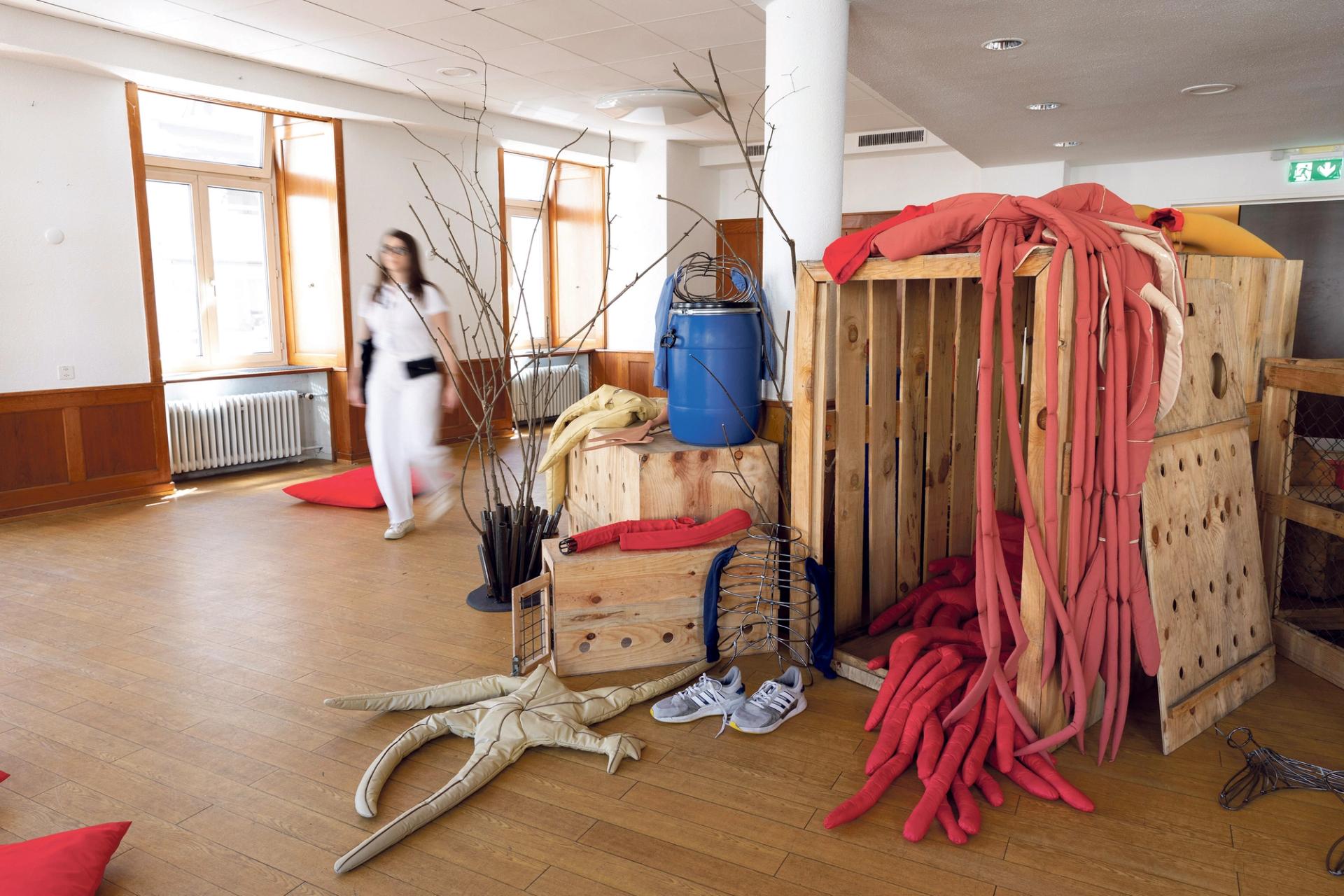
Eva Koťátková, Hotel Rheinfelderhof, Hammerstrasse 61 David Owens
Eva Koťátková
Hotel Rheinfelderhof, Hammerstrasse 61
Eva Koťátková has created an animated landscape-like environment of crates, costumes and sculptures activated through performances [Tuesday to Saturday at 3pm and 6pm; Sunday at 1pm and 3pm]. There are three stories: a kid who is bullied at school; a shrimp being boiled alive; and a shrub being pulled out of the earth. They are these very sad but also humorous, absurd, surrealist stories that speak to questions of confinement, freedom and agency.





